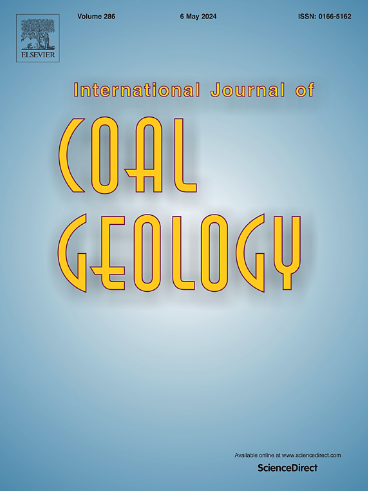Barito盆地(南婆罗洲)煤源含油气系统:始新世和中新世煤质油量的控制因素
IF 5.7
2区 工程技术
Q2 ENERGY & FUELS
引用次数: 0
摘要
婆罗洲南部Barito盆地含始新世和中新世大型煤层和少量含油气系统。以前的作者区分了两个石油家族,称为丹戎和瓦鲁金。煤曾被认为是这两种烃源岩的主要来源,但对丹戎系烃源岩的岩性尚未达成共识。利用生物标志物、热解产物组成和碳同位素比值等地球化学参数进行油源对比。生物标记指纹图谱(原烷/植烷比、非藿烷类三萜和双二二烷丰度、甾烷分布中C29同源物的优势)和二苯并呋喃明显高于芴和二苯并噻吩,清楚地表明它们起源于煤。油煤参数吻合良好,证实了丹戎油与始新世煤、华鲁金油与中新世煤的关系。利用溶剂萃取煤的岩石热解分析和新近研究这些煤沉积环境的岩石学和生物标志物资料,研究了Barito盆地边缘始新世成熟煤(0.52 ~ 0.59% Rr)和中新世未成熟煤(≤0.40% Rr)的成油潜力控制因素。研究表明,所有煤均含有大量的重质富氧沥青组分,这些组分构成岩石- eval S2峰(S2沥青)的一部分,表明始新世煤(高蜡石蜡油)和中新世煤(中等蜡含量的石蜡-环烷-芳烃混合油)的产油类型存在显著差异。结果表明,s2沥青至少部分来源于树脂,生油类型受始新世产树脂植被控制,始新世产树脂植被为棕榈,中新世产树脂植被为龙掌科。其他岩质矿物和泥岩类型似乎没有发挥重要作用。本文章由计算机程序翻译,如有差异,请以英文原文为准。
The coal-sourced petroleum system in the Barito Basin (S Borneo): Factors controlling quantity and quality of oil from Eocene and Miocene coals
The Barito Basin in southern Borneo contains large Eocene and Miocene coal deposits as well as a minor petroleum system. Previous authors have distinguished two oil families, termed Tanjung and Warukin. Coal has been discussed as the source for both, but there is no consensus on the lithology of the source rock of the Tanjung family.
Various geochemical parameters including biomarkers, the composition of pyrolysates and carbon isotope ratios were used for oil-source correlation. Biomarker fingerprints (pristane/phytane ratio, abundance of non-hopanoid triterpanes and bicadinanes, predominance of C29 homologues in sterane distribution) and the clear dominance of dibenzofurans over fluorenes and dibenzothiophenes in oils clearly indicated their origin from coal. The excellent agreement between the oil and coal parameters confirms a relation between Tanjung oil and Eocene coals and between Warukin oil and Miocene coals.
The factors controlling the oil potential of marginal mature Eocene coals (0.52–0.59 %Rr) and immature Miocene coals (≤0.40 %Rr) in the Barito Basin were investigated using Rock-Eval pyrolysis of solvent-extracted coals and petrographic and biomarker data that have recently become available in papers investigating the depositional environment of these coals. The study revealed that all coals contain significant amounts of heavy, oxygen-rich bitumen components, which form part of the Rock-Eval S2 peak (S2bitumen) and showed that the type of oil generated from Eocene (high wax paraffinic oil) and Miocene coals (paraffinic-naphthenic-aromatic mixed oil with moderate wax content) differs significantly. It is concluded that the S2bitumen is at least partly derived from resins and that the generated oil type is controlled by the prevailing resin producing vegetation, which is palms in Eocene coals and Dipterocarpaceae in Miocene coals. Other liptinite macerals and the mire type do not appear to play a significant role.
求助全文
通过发布文献求助,成功后即可免费获取论文全文。
去求助
来源期刊

International Journal of Coal Geology
工程技术-地球科学综合
CiteScore
11.00
自引率
14.30%
发文量
145
审稿时长
38 days
期刊介绍:
The International Journal of Coal Geology deals with fundamental and applied aspects of the geology and petrology of coal, oil/gas source rocks and shale gas resources. The journal aims to advance the exploration, exploitation and utilization of these resources, and to stimulate environmental awareness as well as advancement of engineering for effective resource management.
 求助内容:
求助内容: 应助结果提醒方式:
应助结果提醒方式:


